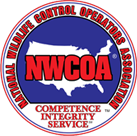OPOSSUMS
Common Concerns & Safety Issues
Host animals to fleas, ticks, lice, etc. If threatened, opposums may attack. Carry various diseases (Leptospirosis, Spotted Fever, Tularemia, etc.)
While they are nature's garbagemen, they pose a threat to pets.
Customers & Locations
Parks
Athletic Fields
Golf Courses
Lake Front Properties
Private Communities
Industrial Sites
Athletic Fields
Golf Courses
Lake Front Properties
Private Communities
Industrial Sites
Business Parks
Townships
County Governments
Boroughs
Schools
Municipalities
Townships
County Governments
Boroughs
Schools
Municipalities
Professional Solutions
- Exclude from structures
- If possible, remove food sources
- Motion activated lights
- Trap and remove the problem animal(s)
Understanding the
OPOSSUM
| Grouping | Marsupials |
| Nicknames | Possum, Really Big Rat, File Tail, Grinner, @#$%^&*! |
| Best Known For | North America's only marsupial (pouched). Lying dead in the middle of the road (literally) and play dead when threatened (catatonic state). Also will hiss, screech, show teeth and emit a foul smelling greenish fluid from rear anal glands. Among other things, they are excellent climbers and have the ability to hang from their tail. |
| Life Span | Their lifespan is between 1-4 years. Most young die the first year. |
| Mating Season | January through June. |
| Reproductive Details | Usually only 1 litter per year in northern areas and 2-3 per year in southern regions. Up to 15 young per litter. Born blind and hairless after a 13 day gestation period. Young must travel to the pouch immediately after birth remaining there 7 to 8 weeks. Juveniles often noticed clinging to and riding on the mother's back. |
| Dispersal | Live locally. Often young leave mom when still as small as a kitten. |
| Habitat | Utilize rural, suburban and urban environments or any place shelter is available. Such as under sheds, decks, and porches. Will invade attics, basements, outbuildings, barns and undersides of mobile homes.Opposums can also be found in woodlots, fields, and farms. |
| Activity Cycle | Typically nocturnal. Not uncommon to be out during mornings and evenings. |
| Food | They are the Billy Goat of the wild and will eat almost everything. Known as scavengers, opposums will eat cat and dog food left out on porches, compost bins, and in trash cans. |
| Damage Signs | Signs include torn down insulation in crawlspaces and under modular homes. Knocked over containers, fecal matter, and trampled insulation in attics or crawl spaces are also other possible signs. |
| Treatment | Trap and remove problem animals, exclude from structures and remove tempting food sources (i.e. compost pile and outdoor cat feeding stations). |
| Distinguishing Features | Features include gray to white and silver fur and a long, pointed snout, and pink nose. They also have hand-like feet, noticeable ears and a round scaly hairless tail. Hind feet have "thumb-like" toes that aid in climbing and grasping. More than any other mammal, they have 50 teeth! |
| Risk | Pose little threat to humans or animals beyond the surprise created in an unexpected encounter with an opossum at the birdfeeder, outside cat dish, shed or crawlspace. Leptospirosis in horses that is transmitted from opossum urine deposits in feed hay. Equine protozoal myeloencephalitis (EPM) is a progressive, degenerative neurological disease of the central nervous system in horses. The opossum is known as the definitive host of the parasite that causes this disease. |


Integrated Wildlife Management is our comprehensive and effective one-stop solution. This approach brings together the six necessary elements to successfully resolve wildlife / human conflicts and when possible, safely relocate wildlife to a more suitable habitat.


